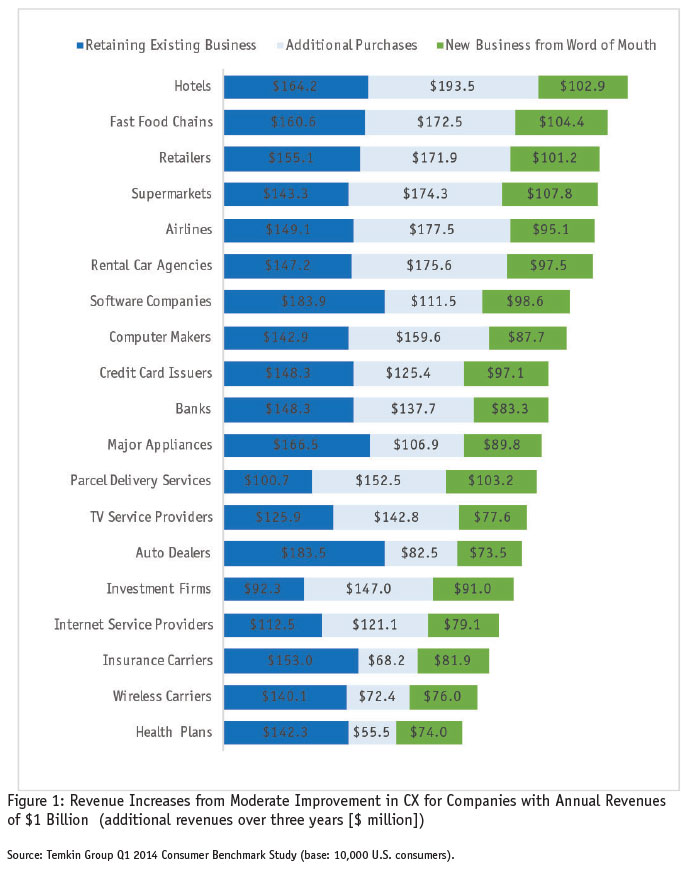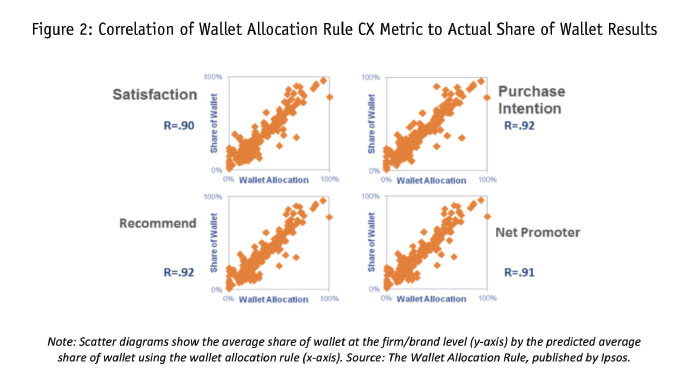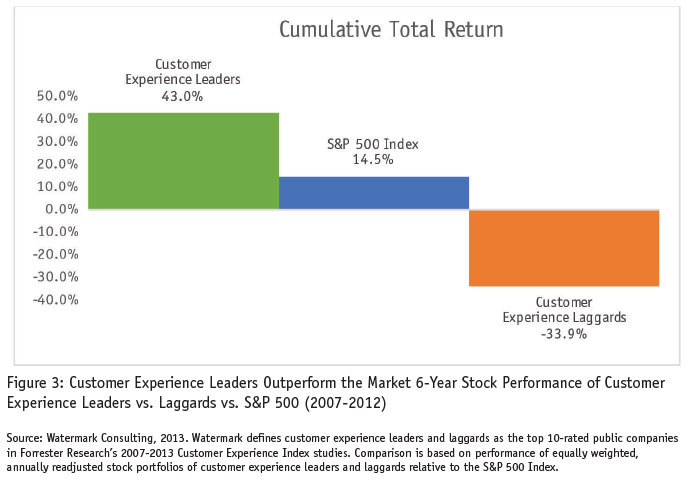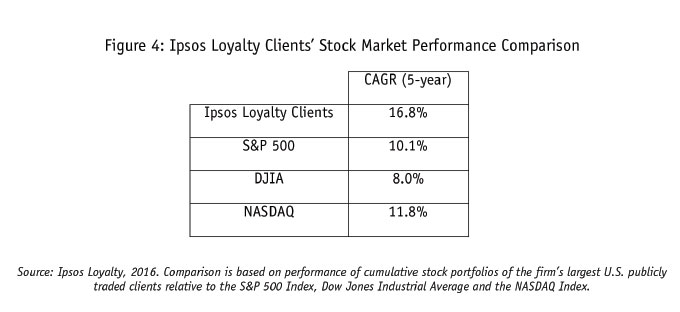Show them the money
Editor's note: Valory Myers is a former vice president at Ipsos Loyalty, a division of France-based research firm Ipsos focused on customer and employee relationship management.
Most business leaders today agree that customer experience is a critical competency for competitive advantage and business growth. “Customer relationships” consistently ranks in the top three of the most pressing challenges facing CEOs as reported by the Conference Board’s CEO Challenge. Top strategies for addressing this situation include: develop a more outward looking customer-centric culture; enhance quality of products/services; communicate corporate values to customers and key stakeholders; improve alignment and accountability of corporate business practices/management behavior with corporate values; and tailor marketing, promotion and communications campaigns to key customer needs.
All of these strategies require significant investment to implement. What barriers are preventing better execution? In many cases, barriers stem from a lack of understanding the potential ROI of customer experience initiatives. Often, CX professionals are simply not speaking the language of CFOs and CEOs when seeking funding for worthy projects.
A clear business case
To gain executive attention, the CX program needs to have a clear business case. Leadership needs to know specifically how customer experience improvements contribute to financial performance. There are many studies that show the relationship between improved CX and increased sales, expanded market share, superior stock market returns and operational efficiency.

How does CX increase sales? When the customers perceive that a brand provides a significantly better customer experience than their competitors, that brand is chosen by more people, more often and more easily (Figure 1).
More people: Satisfied customers become promoters or brand advocates, sharing their stories of great customer experiences with their friends and family, thus creating new customers for their favorite brands.
More often: Customers who are more satisfied with their experiences with a brand are more likely to choose that same brand the next time they are making a purchase decision – over other brands they find fall short of delivering a solid customer experience.
More easily: Satisfaction with one product or service also often makes the customer more open to purchasing additional products or services offered by the brand – creating upsell and cross-sell opportunities.
How does CX grow market share? Customers choose to buy from brands they prefer over other competitive brands available. People are more likely to choose brands that are salient, form relationships through positive customer experiences meeting functional and emotional needs, rank first relative to competitive alternatives and are accessible (e.g., pricing, distribution). In the era of social media, other people’s experiences influence everyone today, not just the customer who experienced it directly. Good and bad experiences impact non-customers as well as other customers. As these choices are made again and again, brands with a good CX reputation are chosen more often. As a result, increasing customer satisfaction relative to competitors drives significantly higher market share.

An Ipsos study of almost 80,000 consumers across 15 countries, 22 industries and more than 650 brands showed a clear linkage in the customer experience metric analyzed in a competitive context called the wallet allocation rule to actual share of wallet (Figure 2). The essential distinction of the wallet allocation rule is that it takes into account both rank – Is your brand a customer’s first choice? Second? – and the number of brands in the set the consumer uses. The analysis yielded similar results for a variety of traditional customer experience metrics including overall satisfaction, likelihood to recommend, purchase intent and Net Promoter Score. The relationship between a brand’s actual share of wallet and its customers’ perception in a competitive context is clear.
How does CX improve stock market returns? Investors prefer brands with positive sales growth and momentum and of course those who are capturing market share from competitors. Forrester conducts an annual benchmark of Customer Experience Index (CX Index) rankings which include how effectively consumers felt their needs were met and how they assessed the ease and enjoyability of their experiences with a wide variety of brands across several industry sectors. A macro-analysis of these CX Index scores collected by Forrester (Figure 3) validated that companies with a higher CX Index rating among their customers greatly outperformed the S&P 500 by a margin of 3:1!

Ipsos Loyalty created a stock market “portfolio” of our current Ipsos Loyalty clients – selecting our largest, most-tenured and -engaged clients and of course, publicly traded (n=17). The index is based on the cumulative percentage change in the market value updated monthly over the past 10 years.
When our clients leverage customer insights and management tools, their stock market performance exceeds the general market. Looking at the compound annual growth rate (CAGR) on a five-year basis alone, the returns for Ipsos Loyalty clients are significantly higher than the S&P 500 and NASDAQ, by at least five percentage points, and more than two times higher than the DJIA! By responding to customers’ needs more effectively than competitors, our clients recover from downturns and capture value during growth periods much faster than the broader market.
How does CX drive operational efficiency? When a company focuses on CX, it integrates feedback through multiple customer listening posts in an insights hub for the organization, typically an enterprise feedback management (EFM) system. An EFM system allows real-time access to customer feedback following key interactions (e.g., product purchase, customer service call). When done right, companies can use that real-time feedback to improve service recovery with more effective closed-loop processes that lower the cost of service. By proactively following up with dissatisfied customers, brands can eliminate return trips to the store or calls into the phone center and, even worse, defection! Brands that are world-class at closing the loop take it one step further and establish operational processes to identify critical incidents in real-time, route to the right person and resolve with the appropriate intervention. Algorithms based on a combination of factors, such as type of critical incident, customer profile/value or transaction history, can then be created to help companies deploy intelligent closed-loop systems that can suggest the most appropriate response in any given situation. Ipsos has published a separate whitepaper based on primary research which demonstrates the financial value of this system: www.ipsos.com/sites/
default/files/2016-07/smarter_closed_loop.pdf.
Other benefits of a CX-focused culture that best-in-class brands enjoy is often a lower cost of acquisition and better-than-average customer value. They achieve this by targeting the right customers with the right messages that resonate and the best product/service/value mix for their needs. The right customer, message and offer are usually uncovered through a loyalty key driver analysis in VOC measurement programs and by profiling most/least loyal customers to identify which prospects are most likely to benefit from their product or service. Through improved targeting, brands can attract new customers and deepen relationships with existing customers with less effort.

Finally, best-in-class CX leaders are relentless in prioritizing which areas of the customer experience they want to be known for (e.g., low cost for Southwest Airlines) and which areas they do NOT (Southwest is not selling luxury). Brands cannot be all things to all customers. Often, brands are over-delivering in areas that don’t really matter to their customers and don’t contribute in a meaningful way to the customer’s experience. By reducing investment in those low-impact areas, brands can save money, freeing up dollars for those relevant CX improvement initiatives on the list.
Speak the right language
To help CEOs address the pressing “customer relationships” challenges, CX professionals must learn to speak the right language of ROI to secure funding for projects that will improve the customer experience. The evidence is clear and compelling that improving customer experience has a positive financial impact to businesses in many ways. CX leaders should build the business case for a CX improvement initiative to compete – and win – on a level playing field with other projects CEOs are reviewing. Best practices include utilizing an ROI calculator to estimate an initiative’s impact on customer loyalty and ultimately the financial impact expected – through sales growth, market share, cost savings, etc. Once funded, best-in-class companies track CX improvements over time and calculate the actual financial impact. With these real-world ROI results, CX professionals gain the credibility to seek investment for larger improvements, leveraging the same business case discipline. Customer experience improvement initiatives are worthy investments and sound business cases are needed to secure CEO buy-in.
